i) Introduction
ii) Interactions
iii) Werner Heisenberg’s Electron
iv) Carlo Rovelli’s Electron
v) Systems, Systems, and More Systems
vi) Is RQM an Anti-Realist Position?
vii) Conclusion
Carlo Rovelli is an Italian theoretical physicist. He works mainly on quantum gravity. He’s also a founder of loop quantum gravity theory (along with Lee Smolin). Rovelli won the second prize in the 2013 FQXi contest “It From Bit or Bit From It?” for his essay on “relative information”. His book, Seven Brief Lessons on Physics, has also been translated into 41 languages and has sold over a million copies worldwide.
Rovelli introduced the relational interpretation of quantum mechanics in 1994.

Carlo Rovelli’s overall position is classed as relational quantum mechanics (RQM). This is an “interpretation” of quantum mechanics in which a quantum system is seen as being “observer dependent”. In terms specifically of the word “relational” in “relational quantum mechanics”, this means that there’s a relation between an observer and a quantum system.
In addition to the inclusion of observers into the quantum equation, we also have the many relations between physical systems and physical systems. Or as Rovelli puts it:
“Quantum mechanics is a theory about the physical description of physical systems relative to other systems, and this is a complete description of the world.”
The importance of relations is broader than one may initially think. Rovelli himself ties it to the theory of relativity.
Take the velocity of any object. The notion of the velocity of object O as it is “in itself” (as it were) is deemed to be meaningless. The velocity of object 0 is actually measured relative to — or in relation to — other objects.
Now take two events which are deemed to occur at the same point in time; even though they do so at vastly different places from one another. In the case of Special Relativity, both events must be measured relative to (or in relation to) something else. In addition, when it comes to General Relativity, objects in space and time (or in spacetime) need to be seen in relation to — or relative to — the gravitational fields in which they’re embedded (or to something which is “dynamical”).
However, Rovelli broadens out his relationism even more when he moves from quantum mechanics and Einsteinian relativity to — of all things! — what he calls “man”.
Here Rovelli gives a perfect description of what philosophers class as anti-realism. Oddly enough, he uses the words of Democritus to do so). Rovelli writes:
“Democritus gave a strange definition of ‘man’: ‘Man is what we all know.’”
This appears to be a poetic expression of philosophical anti-realism. That is, it stresses what we can know, not what is. That anti-realist position is applied to “man” in this way:
“The nature of a man is not his internal structure but the network of personal, familial and social interactions within which he exists.”
We can say, then, that Rovelli doesn’t believe that man has a substance (or an “internal structure”) — and he certainly doesn’t have what philosophers call an essence. Instead, man is “nothing more” than a network of relations. In this case, Rovelli’s relationism moves from the quantum scale to the “classical scale” — and there’s nothing more classical than man.
However, here we can argue that there must be something (or some things) which have these relations. So is it good enough to argue that whatever these things are, they are themselves made up entirely of relations?
Interactions
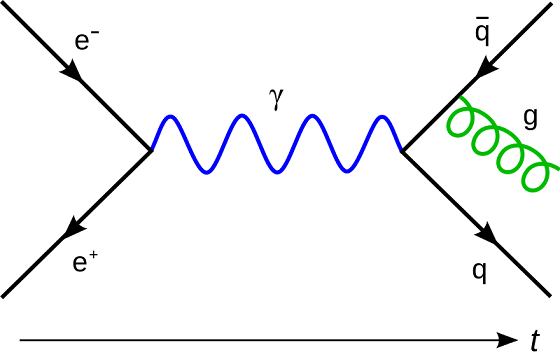
In the philosophical position called ontic structural realism (as usually advanced in the philosophy of physics), relations and (mathematical) structures are seen to be everything. (Therefore “every thing must go”.) Carlo Rovelli, on the other hand, stresses “interactions”. For example, he writes:
“The description of a system, in the end, is nothing other than a way of summerizing all the past interactions with it, and using them to predict the effect of future interactions.”
Having just mentioned ontic structuralism realism, there’s nothing in Rovelli’s account that immediately clashes with ontic structural realism. It seems to be a simple difference of stress. Indeed Rovelli himself also talks about relations. In any case, things (or objects) seem to be eliminated from the scene in Rovelli’s scheme.
We can now move to Nathaniel David Mermin (a solid-state physicist) to get a more explicit position on such ostensible thing-eliminitivism. In his “Ithica interpretation” we have what he calls “correlations without correlata” (i.e., instead of ontic structural realism’s “relations without relata”) .
Indeed David Mermin is even more explicit when he says that
“correlations have physical reality; that which they correlate does not”.
What’s more, he adds:
“[C]orrelations are the only fundamental and objective properties of the world.”
So whereas James Ladyman (an ontic structural realist) has sometimes said (or implied) that things aren’t actually eliminated from their ontic structural realism (simply because things are themselves structures), Mermin is far more explicit about his position.
Werner Heisenberg’s Electron
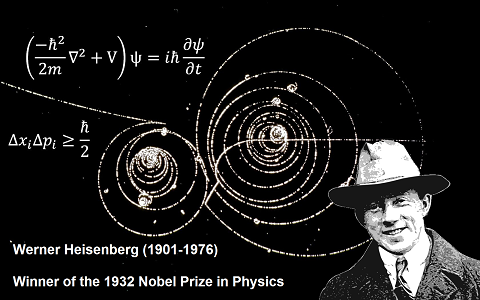
Much of this ties in with Werner Heisenberg’s well-known “uncertainty principle”.
In the updated language of Rovelli’s relationism, it can be said that Heisenberg argued that it’s only when the electron is “interacting” with another system that its position can be detected. When it’s not interacting, the electron is “spread out” over many different positions. That is, the electron is in a “quantum superposition” of various different positions.
What’s more, this is a relationism which not only includes interactions with other systems: it also includes interactions with human observers. That is, the position of the electron can be determined by an observer; by a “quantum reference system”; or by an experimental apparatus/experiment. So this is a set of relations “all the way down” — from particles to systems to human observers to experimental setups.
More technically, we have an “observer system” O (which can be seen as an epistemic system) which interacts with a quantum system S (which can be seen as an ontological system).
We therefore need to take into account the fact that there are (or can be) different accounts of the same quantum state or system. (This is, after all, a variation on the “underdetermination of theory by evidence” idea.)
In more technical detail, we can have a system which is in a superposition of two or more states. We can “collapse” this system to achieve an “eigenstate” which is (at least to some degree) determinately circumscribed. Thus if we have two or more “interpretations” of system (or state) S, then observers must have been brought into the story. And that means that there are additional relations (or “interactions”) to consider.
This also means (or can mean) that we need a second observer (O’) to observe the observer-system (O); who, in turn, observes the quantum system S. This multiplies relations indefinitely. Indeed don’t we have a possible infinite regress on our hands here?
Michio Kaku raises this issue in the case of human observers vs. cameras. Kaku writes:
“Some people, who dislike introducing consciousness into physics, claim that a camera can make an observation of an electron, hence wave functions can collapse without resorting to conscious beings. But then who is to say if the camera exists? Another camera is necessary to ‘observe’ the first camera and collapse its wave function. Then a second camera is necessary to observe the first camera, and a third camera to observe the second camera, ad infinitum.”
This is a concrete example of the problem of “Wigner’s friend”. That is, if I collapse the wave function for an electron, then my friend has to observe me collapsing the electron’s wave function. He also needs to collapse the wave function which is myself collapsing the electron’s wave function. Then a friend of my friend will need to observe my friend to collapse the wave function which is my friend; who, in turn, is collapsing the wave function which is myself collapsing the electron’s wave function... And so on.
Carlo Rovelli’s Electron
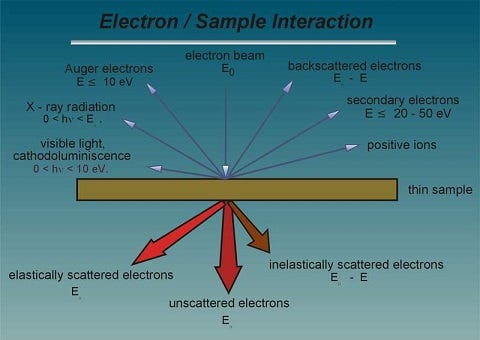
Rovelli also tackles the electron.
Rovelli puts an every-thing-must-go position for the electron. Or, at the very least, he argues that an electron is not a thing without its relations or interactions. In Rovelli’s own words:
“An electron is nowhere when it is not interacting… things only exist by jumping from one interaction to another.”
Of course in many respects this is a standard account of an electron and the wave function. Rovelli adds more to his account of an electron in the following:
“What if, effectively, electrons could vanish and reappear? What if these were the mysterious quantum leaps which appeared to underlie the structure of the atomic spectra? What if, between one interaction with something, and another with something else, the electron could literally be nowhere.”
Semantically, we can now ask this question:
If the electron does literally vanish, then how can it then reappear?
How how can something that ceases to be, then “reappear”? Surely if something vanishes (or ceases to be), then something entirely new (or something else) must appear. (Unless x vanishing isn’t the same as x ceasing to be.)
Of course we’re talking about quantum states/systems here so these questions may well be naïve or uninformed. Firstly, what exactly is meant by Rovelli’s word “vanish”? What we may have is various fields and forces which are “strong” or “excited” (as in “excitations of fields”) at one spacetime point; which become weak at other spacetime points; and then (due to Rovelli’s “interactions”) appear (or become stronger) at another spacetime point.
In terms of Rovelli’s own detail.
If this ostensible disappearance of an electron is accounted for by the “mysterious quantum leaps which appeared to underlie the structure of the atomic spectra”, then, between x and y (the “quantum leap”), there are still fields and forces. (Elsewhere, Rovelli says that “an electron is a combination of leaps from one interaction to another”.) However, the strength of the excitations of the fields and forces aren’t enough (i.e., between x and y) to constitute an electron. So when this something gets to y, the excitations of the fields and forces are indeed strong enough to constitute an electron. It can now be said that the electron at spacetime point x shouldn’t really be seen as “the same as” (or identical to) the electron at spacetime point y. Indeed why see it as the same electron at all?
Technically, this can be partly explained by reference to something Albert Einstein described way back in 1916.
An electron can be in (or actually be) an “excited” state of fields and forces. That partly means that the electron has extra energy to that which it had before. Indeed it may not be correct to see it as the same electron before it had that excited state of extra energy. One other consequence of this excited electron is that if a photon with a particular wavelength “passes” the electron, then that photon can make the electron leap/fall/jump into a lower energy state. That, in turn, will result in another photon being released with the same wavelength as the first photon. So then we would have two photons.
In terms of the theme of this piece, we can argue that the electron doesn’t exist at all between the the low-energy state and the high-energy state (i.e., there’s no electron — therefore no electron fall — between low-energy x and high-energy y). Indeed without any kind of excitation (therefore any kind of energy), the electron doesn’t exist at all. That is, there is no electron between x and y.
Despite all that, Rovelli himself doesn’t speak in terms of excitations of fields and forces: he talks, instead, in terms of “interactions”. That is, the electron reappears when it interacts with “something else”. However, this may be to say the same thing in a different way. That is, interactions in a quantum state (or system) are the same thing as excitations of fields and forces within a quantum state (or system). In other words, the interactions cause the excitations of fields and forces within a state/system.
Thus Rovelli believes that the electron is literally “nowhere” between the earlier x and later y. In that case, it makes no sense to say that the “electron is nowhere” because it’s (roughly) equivalent to saying, “My long-dead cat is nowhere.” Having said that, the conclusion that there is an electron at spacetime point x and another electron at spacetime point y (though no electron between spacetime points x and y), does seem to contradict certain positions in quantum mechanics.
So, again, when Rovelli says that
“the electron could be something that manifests itself only when it interacts, when it collides with something else; and that between one interaction and another it had no precise position?”
I would express it this way.
There is no electron between the interactions. If an electron exists at spacetime point x due to interactions, then when such interactions cease, the electron itself ceases to exist. And when we have another interaction at spacetime point y, then there’s an entirely new electron. In other words, in the spatiotemporal region between spacetime point x and y, there is literally no electron. Of course there must be something between x and y; though, still, there’s no electron.
Systems, Systems, and More Systems

To make this talk of systems simpler, it’s worth noting (again) that human observers are also classed as systems. What’s more, relationism actually appears to introduce an element of relativism when it comes to an electron: it only has a “meaning” relative to an observer or a system. Thus, if you are that system, then whatever it is you observe, then it only exists in that manner (or at all) for you. In Rovelli’s words, it only exists in that manner because you’ve “interacted” with it.
Although the stress on systems observing (or measuring) systems may seem to make any kind of realist ontology impossible (with regards to quantum mechanics). At least realism is impossible as it’s expressed in the following way:
Systems (including observer-systems) measure (or observe) systems because systems can’t measure (or observe) themselves.
Indeed even in the “classical world” it can be said that macro-objects don’t tell us about themselves. That is, the classical world as a whole doesn’t have its own favoured description. That’s why systems are required at both the quantum and classical levels. In anti-realist or epistemological terms, only systems can (metaphorically) know the world.
Simon B. Kochen (a Canadian mathematician) stressed another way in which systems themselves (rather than “the world”) are of importance in quantum mechanics. He wrote:
“The basic change in the classical framework which we advocate lies in dropping the assumption of the absoluteness of physical properties of interacting systems… Thus quantum mechanical properties acquire an interactive or relational character.”
That is, physical properties only become absolute when they interact. Or, instead, we can drop the notion of absoluteness altogether and say (from an anti-realist perspective) that we can only know physical things when they interact. And by “interact” (in this case) I mean that human observers (or observer-systems) are also doing the interacting. This, surely, is a new(ish) addition to the anti-realist’s armoury.
All this can be expressed technically in the following manner.
We have what’s called an “abstract vector space”. We make a measurement of it to get q. In terms of relationism, this is the probability that the system S being measured can affect the system S’ (or an observer-system) in a joint interaction in order to get q. Because of the importance of different interactions with S, the wavefunction Ψ must take into account different observer-systems and therefore different outcomes. All outcomes are probabilistic. And all observer-system interactions “collapse the wave function”.
Is RQM an Anti-Realist Position?
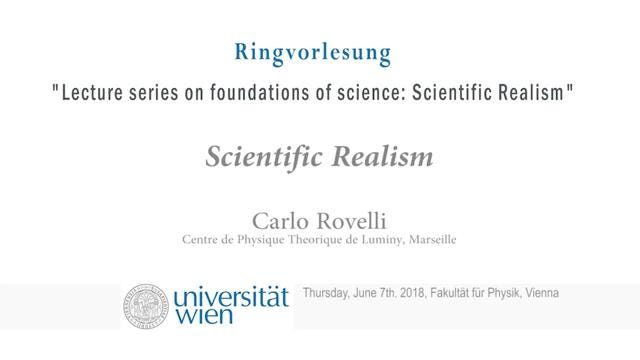
A philosophical bias can be displayed here if it’s argued that relational quantum mechanics is basically advancing the position that epistemology trumps ontology. RQM is about what we can know and what we can’t know. Thus, according to Rovelli, “relations [] ground the notion of ‘thing’”. Epistemically, we can know these “relations”: we can’t also know “things”. And, because of that, Rovelli also says that “[t]he world of quantum mechanics is not a world of objects: it’s a world of events”.
Now it can of course be said that it must be things (or some things) which interact. Yes; though, again, can we know anything about these things?
So if we’re dealing with what Rovelli calls “occurrences”, then, as a consequence, we’re also dealing with relations. That is, if anything, occurrences (or interactions) can only be occurrences (or interactions) between a system and another system. It can be argued that we know nothing of things. We only know about the relations between a system and another system. So things aren’t said not to exist: it’s simply a case of things actually being (at least in some sense) Kantian noumena.
(In this account we can use terms from Hegelian metaphysics. In this case, then, we’re only dealing with Becoming, not with Being — i.e., what a thing is. We don’t know about the nature of Being. We do know about Becoming.)
In fact Rovelli says something which appears to be mereological in nature. He believes that “[t]hings are built by the happening of elementary events”. That is, a thing is the sum of the “elementary events” which constitute it. Rovelli allows the (now dead) American philosopher Nelson Goodman to back him up on this. He quotes Goodman thus:
“‘An object is a monotonous process.’”
Here again we have the mereological reality of an “object” being constituted by “its” processes or events. If you take away the events, then you also take away the object. The object, then, is nothing more than the processes (or events) which constitute it — even if those processes (or events) are “monotonous”. So whereas Goodman expresses himself in philosophical terms by talking about an “object”, Rovelli himself elaborates by saying that an object (such as a stone or an electron) is actually “a vibration of quanta that maintains its structure for a while”.
Conclusion
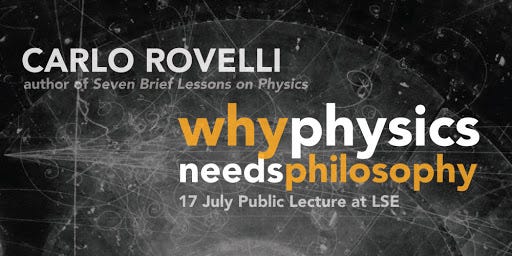
It appears that there’s nothing much in Carlo Rovelli’s account that’s radically at odds with certain other interpretations of quantum mechanics. It also squares fairly well with the philosophical account offered by ontic structural realists; it squares very well with the physics-and-philosophy account of Lee Smolin; and it even squares with some other interpretations offered by pure (i.e., non-philosophical) physicists. It certainly squares with uninterpreted quantum mechanics. (Whether or not there’s a neat line in the sand which can be drawn between interpreted and uninterpreted quantum mechanics is hard to say.) As just hinted at, that’s because we’re talking about the interpretations of quantum mechanics here. And in terms of experiments, predictions and technology, this means that these interpretations — ultimately — don’t make that much of a difference to such things. This also means that it may not be possible to conclusively establish which interpretation is true. Indeed perhaps many rival interpretations are true at one at the same time. Or perhaps no interpretation is true. It may even be the case that truth shouldn’t really come into this because truth may require a metaphysically-realist stance. Yet, in the domain of quantum mechanics (perhaps elsewhere too), ontological realism may be impossible.








